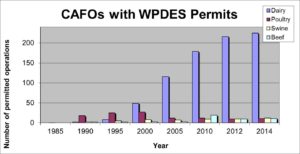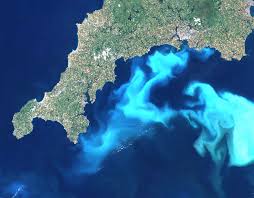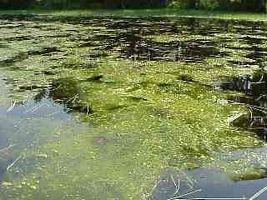At a time when the number of factory farms has risen precipitously, cutting regulatory staff tasked to ensure these operations remain compliant with regulations is a curious, questionable move. But, in WI, this is precisely the what is happening.
According to a recent article in the Milwaukee Journal-Sentinel, pressure to reduce budgets has resulted in a 18% reduction in staff at the WI Department of Natural Resources, since 1995. This, while the number of Concentrated Animal Feeding Operation (CAFO) permits in WI has more than doubled in the past decade.
 Even more troubling? Fines for pollution in WI hit a 30-year low in 2015.
Even more troubling? Fines for pollution in WI hit a 30-year low in 2015.
Several counties in WI are struggling with — perhaps suffering under is a more appropriate description — massive increases in dairy cows in their region, and the incredibly large amounts of manure these herds create. Kewaunee County, as has been mentioned numerous times in prior blogs here, is perhaps the best current example.
While nobody argues the value of manure as a valuable source of fertilizer for farm operations, it is also clear that manure is a primary contributor to non-point pollution which results in devastating algae blooms as seen annually in Lake Erie, Lake Okeechobee, and many other rivers, streams and lakes across the USA.
Wisconsin lawmakers suggest that cooperative regulation will make the process more efficient, less costly, and will result in better practices resulting in decreased pollution, etc.
Perhaps.
But just as likely, if not even more so, is that environmental costs in the form of contaminated ground water, surface water dead zones, algae blooms, and the inherent health risks within area communities, will far outweigh whatever meager savings and questionable efficiencies are attained.



